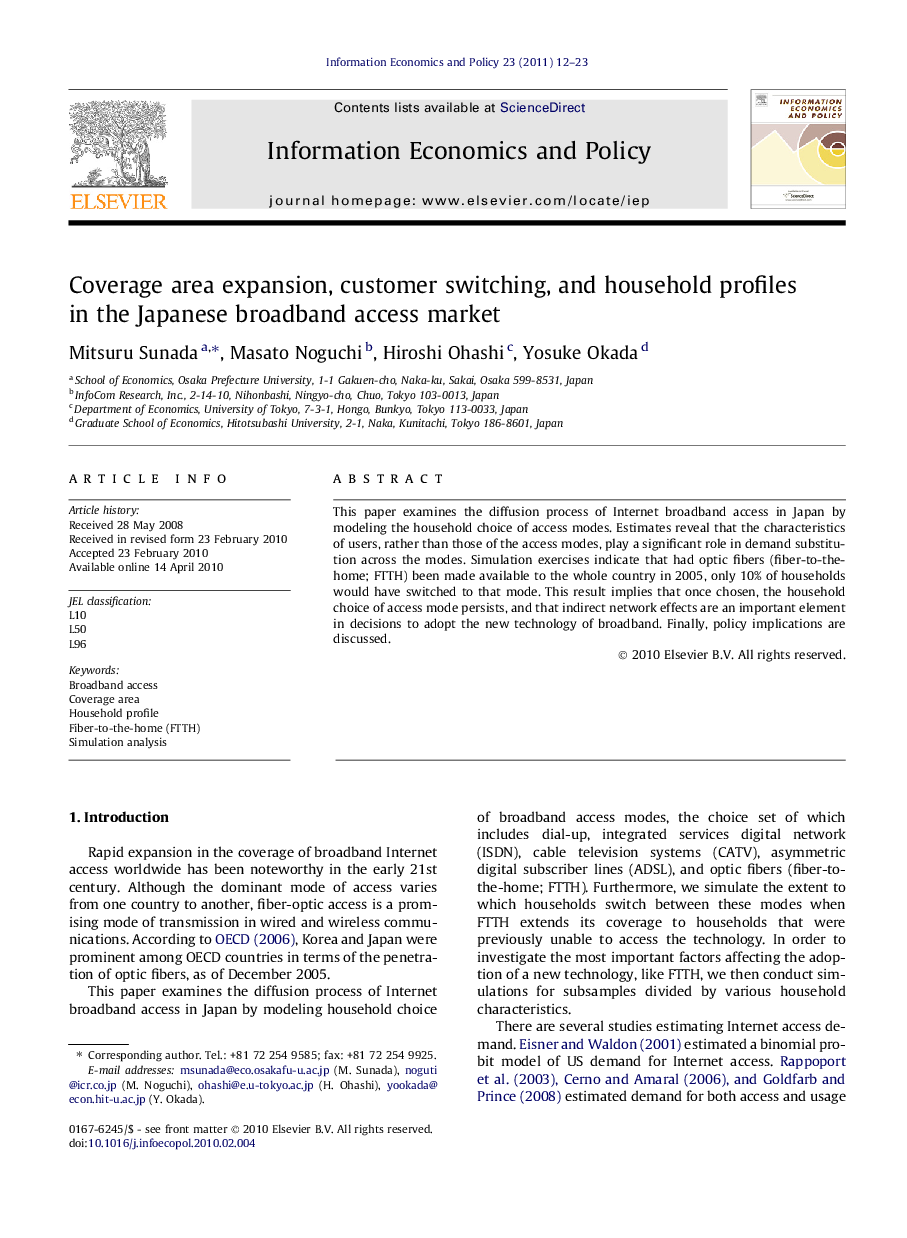| Article ID | Journal | Published Year | Pages | File Type |
|---|---|---|---|---|
| 5075922 | Information Economics and Policy | 2011 | 12 Pages |
Abstract
This paper examines the diffusion process of Internet broadband access in Japan by modeling the household choice of access modes. Estimates reveal that the characteristics of users, rather than those of the access modes, play a significant role in demand substitution across the modes. Simulation exercises indicate that had optic fibers (fiber-to-the-home; FTTH) been made available to the whole country in 2005, only 10% of households would have switched to that mode. This result implies that once chosen, the household choice of access mode persists, and that indirect network effects are an important element in decisions to adopt the new technology of broadband. Finally, policy implications are discussed.
Related Topics
Social Sciences and Humanities
Business, Management and Accounting
Management of Technology and Innovation
Authors
Mitsuru Sunada, Masato Noguchi, Hiroshi Ohashi, Yosuke Okada,
